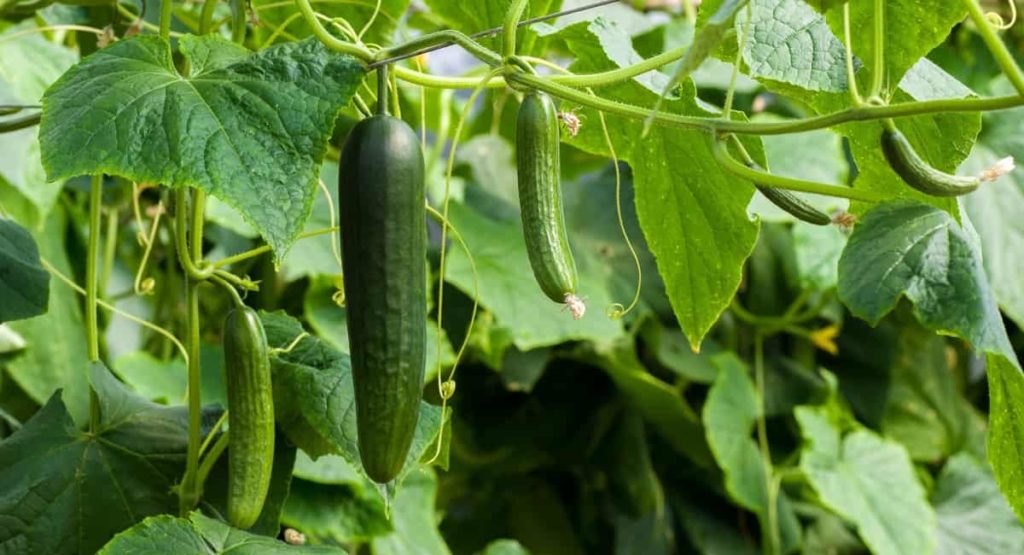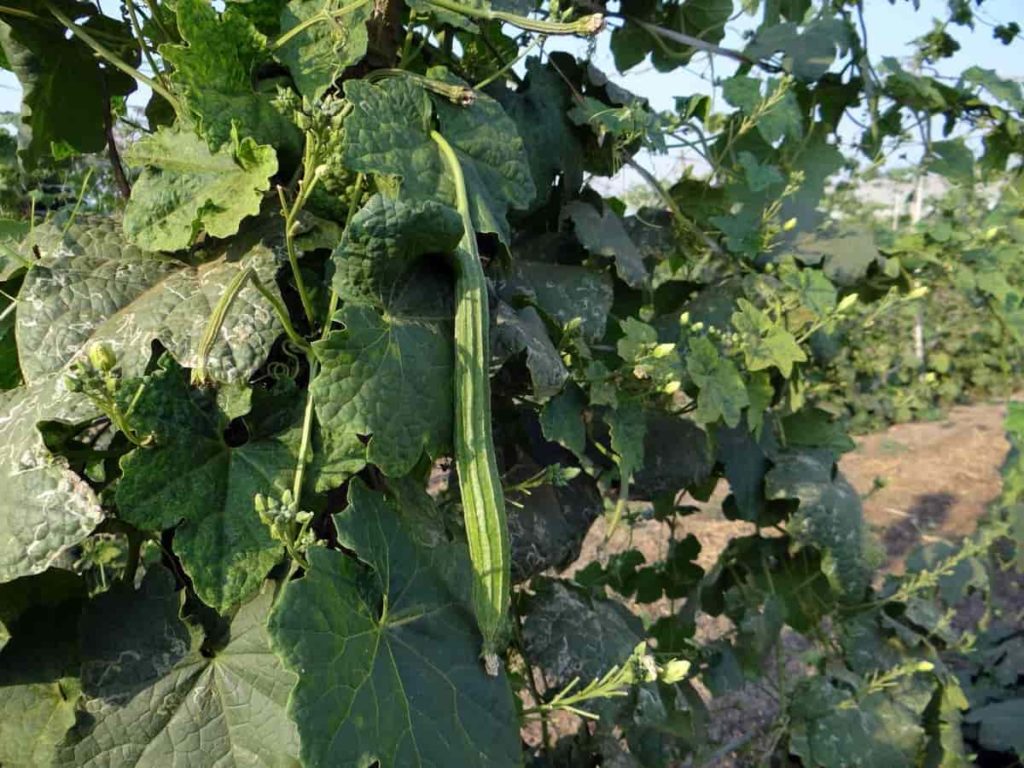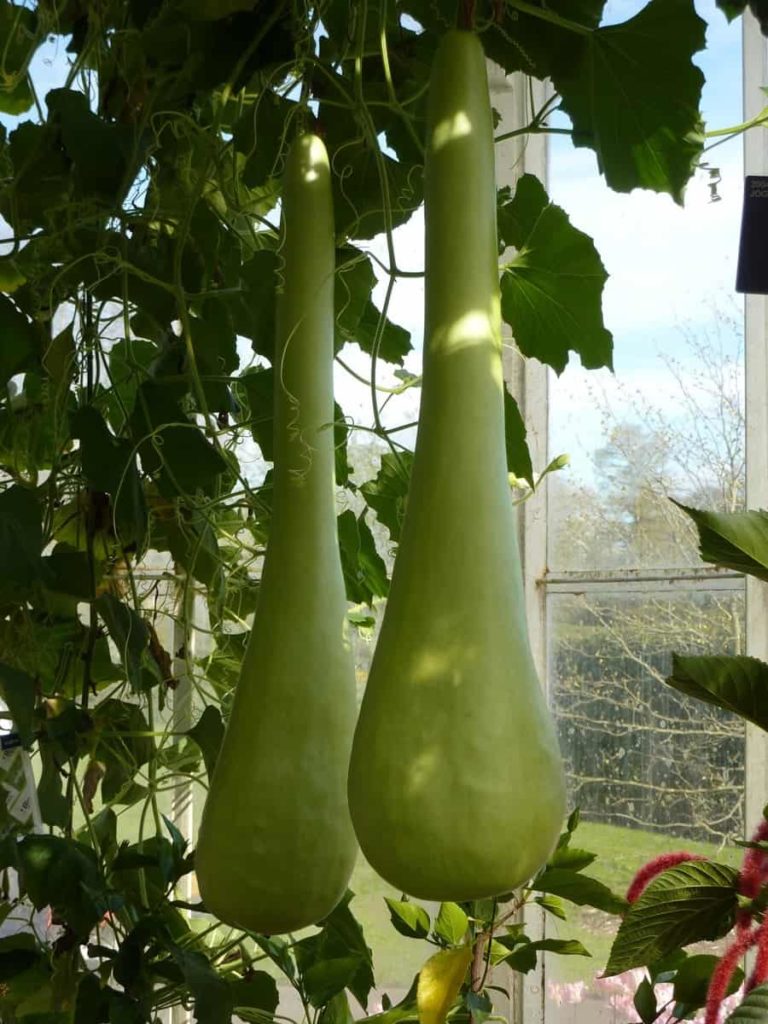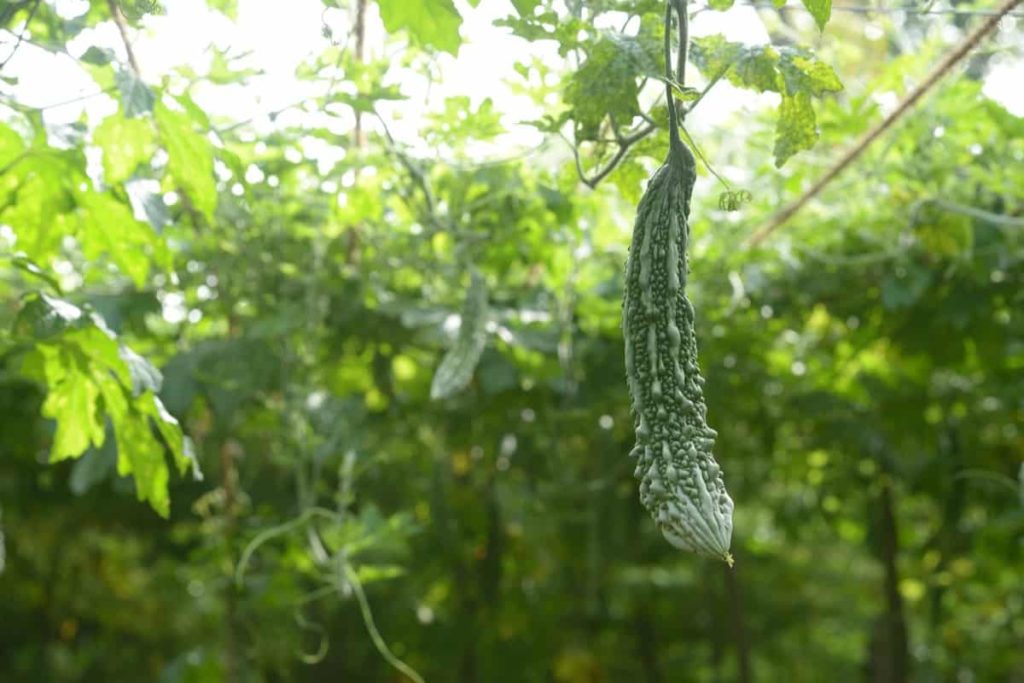If you are an Indian living in California and wandering about what Indian edibles to grow in California, then this article is for you. The climate of California is suitable for growing several Indian vegetables. Also, if you choose to install a controlled environment such as a small greenhouse in your backyard, you may be able to grow almost all the vegetables that you can grow in India. Let’s check out how to grow Indian vegetables in California.
For growing vegetables in the backyard for your place, first, you need to know the planting zones of the area you reside. As we are discussing California, we have provided the information about the planting zones of California, which is helpful for you to choose the vegetables you want to grow in your garden.
What are the planting zones of California?
When it comes to year-round gardening, California is the place to be. In the majority of the state, summers are dry and warm, while the winters are damp and cold. Several climatic zones in California cover the whole state from arctic to subtropical, making the state’s plantation zones distinctive. Even in the winter, temperatures in the bottom portion of the state seldom fall below freezing. Throughout the year, the northern area may be much colder and wetter than the rest of the country.
You can design and develop a successful garden in California if you know the state’s growth zones. Planting zones in California vary from 5a to 11a. Because of its size, the state is further divided into planting zones in the north and south. Planting zones in northern California range from 5a to 10b. Zones 5a through 11a cover the southern part of the continent. Helps identify when and what to grow in different seasons. It’s simple to predict which cultivars will thrive in a given state based on the last frost date and the first frost date.
If you want a flower, plant, or vegetable garden that will yield throughout the year, use Gilmour’s Interactive Planting Zone Map. Growth choices in California’s growing zones are many and diverse. California is home to more than 200 different types of crops, many of which are grown in greater quantities than anyplace else in the country. Pistachios, grapes, and other nuts will thrive in this condition. Artichokes, tomatoes, squash, green beans, maize, and avocados are some of the summer vegetables that thrive.
Californians may grow a variety of flowers, including poppy, salvia, wildflowers, daisies, and morning glory, in most areas. Not only these, but you can also grow many Indian vegetables, such as tomatoes, bell peppers, eggplants, onions, greens, garlic, beans, corn, and cucumbers. The hardiness zone of California provides support for the growth of all these vegetables which can be helpful for you to grow them in your backyard.
How to grow Indian vegetables in California
Eggplants
Since moving to Southern California, eggplants have become a staple in vegetable gardens. Lavender Rosa Bianca eggplant, for example, is a heritage variety that grows well with minimal effort. Depending on where you live, your eggplant might become a perennial if it isn’t exposed to frost. When temperatures begin to drop in the autumn, you may simply prune back your plant and let it survive the winter. Early in the spring, new sprouts will begin to appear.
In case you missed it: How to Grow Indian Vegetables in USA: at Home, in Backyard, and Pots – A Step-by-step Guide

This variant has a spineless calyx and a beautiful purple and white striped calyx. Once the harvest has begun, these plentiful aubergines can continue to produce far into the early autumn. The smaller Indian-style fruits are best plucked when they are approximately 2 inches long. Keep an eye out for spider mites and flea beetles when the temps increase in July. These pests are difficult to control naturally.
Pole beans
One of the best ways to boost nitrogen levels in your Southern California vegetable garden is to grow pole beans. When the soil is warm, it is critical to plant beans. You may still need to boost the nitrogen content of your soil to get a large harvest from beans like fava, which are particularly excellent nitrogen producers.
During the late summer, it is discovered that beans don’t like it when the temperature constantly rises beyond 90 degrees Fahrenheit. If you want to eat your beans fresh, keep an eye on your vines in the late spring when production should be at its peak. If there is no chance of rain, you may let them dry on the vine if you want.
Trellises or pole tepees can be used to grow beans from April through August. With the help of bean inoculant, direct-sow two to three bespeckled seeds per pole. In most cases, pole beans don’t need to be trimmed, although stray vines may be topped or redirected. The finest taste, sensitive texture, and high yield come from harvesting fresh beans before the seed bumps develop. Let the beans mature on the vine before drying and storing them for later use.
Tomatoes
Tomatoes are the greatest crops to grow in Southern California. Even though they are technically fruits, we prefer to think of them as vegetables when it comes to food and gardening. When you raise your tomatoes, they taste so much better! There is a huge variation in taste. To ensure safe transportation and extended shelf life, most supermarket tomatoes are plucked while still green. To get the most taste out of a homegrown tomato, pluck it when it’s at its optimal ripeness.
In case you missed it: Small Vegetable Garden Ideas for Indians

You can also produce heirlooms, slicing tomatoes, canning/sauce tomatoes, and pop-in-your-mouth-from-the-vine cherry tomatoes if you have a backyard garden. The globe-shaped ‘Carmello,’ together with the perennial favourite ‘Sungold,’ will change the way you think about hybrid tomatoes forever. As one would anticipate from a hybrid, this highly sought-after market variety is early to harvest, prolific, and disease resistant, but it also boasts an exceptionally sweet, flowery tomato taste that much surpasses the flavour of comparable slicing varieties.
To provide a consistent crop during the extended growing season, we use indeterminate or vining tomato cultivars like Carmello. Floating row coverings or shade cloths are used to prevent blossom drop, sunscald, and other heat stress in the California environment.
Bell peppers
Peppers are another excellent product to grow in Southern California’s Mediterranean climate. Temperatures in southern California seem to be just right for them. If you’re starting from scratch, the months of February and March are ideal. And if you’re starting with seedlings, May is the best month to grow peppers. Planting peppers before May is possible, but the plants won’t be able to develop quickly enough to overcome the harm inflicted by pests like earwigs.
Planting peppers later than May is possible, but you’ll receive fewer fruits from the plant overall because of the later planting date. Peppers, on the other hand, require a little more warmth to get going than tomatoes. If you compare the germination times of tomato seeds and pepper seeds in a compost pile, you’ll note that the peppers usually sprout later, when it is warmer. All peppers, of course, do not have to be spicy. It is an excellent idea to grow bell peppers in your Southern California vegetable garden, and they are also a popular Indian dish.
Green leafy vegetables
Greens thrive in Southern California throughout the colder months of winter, autumn, and spring. If you ask them to develop during the hottest months of the year, they will suffer greatly. Mid-damp, January’s moderate weather is ideal for the growth of greens. They are in the prime of their lives at this point. Their flavour is exquisite, and they have a substantial stature to match.
If you reside inland near the shore, you’ll notice that they don’t taste as delicious, they’re always withering no matter how much water you give them, and they frequently begin to blossom quickly. Sowing seeds of greens may begin as soon as August or September and continue through the autumn, winter, and spring until as late as May. Sow or plant fresh greens until at least August, and then tend to whatever plants are left in your garden for the remainder of the year.
This is the general pattern I’ve seen to be effective in gardens in Southern California between two and twenty miles from the ocean, but every year is a little different. Aeroponics is the greatest method for growing them. Aeroponics is not for everyone, but you don’t have to worry! Planting greens in garden beds and small pots are still a viable option. A series of sowings is the secret to a constant supply of fresh vegetables.
To guarantee that your plants develop at separate rates, you should put your seeds around 10-20 days apart. Greens perform best when the temperature is below 90 degrees Fahrenheit since they are not very heat resistant. Temperatures in the 60s and 70s are ideal for them.
Onions
Why not produce your onions? They’re so simple to grow, and they’re often utilised in meals. There is evidence that planting onions between your tomato plants reduce bugs. Green onions and little bulb white onions are the most often used, but the sky is the limit. Green onions may even be grown in water and then transplanted into the ground after fresh shoots have sprung out. Another perk of growing onions is that they may be harvested at any time since they can be kept in the ground for a long period.
Cucumbers
There is no doubt that growing cucumbers in Southern California is a great idea. Because they may be trellised, they grow quickly and take up little space as long as they are well-watered. Growing Lemon cucumbers like weeds in your backyard garden can produce for months and they are fast with quality fruit.
In case you missed it: Earning 24 Lakh from Greenhouse Farming – A Success Story

To prevent a woody skin, cucumbers should be harvested when the skin is pale yellow and not too orange. Regular English grow rapidly and readily, but the vines never seem to live long, thus succession planting is the key to constant cucumber production. Around 50 to 70 days after planting, cucumbers are ready to eat.
Garlic
The majority amount of the garlic sold in the US comes from California. So, it is one of the best suitable plants to grow in California. Starts of garlic are used to grow garlic. Planting the cloves, pointed side up is the proper way to use these bulbs, which have been split in half. Garlic does take a long time to develop, however.
Early spring is the best time to plant cloves and to cease watering in June. This will improve bulb output. In late July or early August, the tops of the cloves have fully browned and dried up, making them ready to be harvested. Let your garlic lie in a dry, shaded spot for two to three weeks to ensure that it will last.
Sweet corn
Adding sweet corn to a Southern California garden is a great idea. Small quantities are usually grown as a novelty crop because of the space requirements. Having numerous rows of sweet corn in a small plot of land is essential for pollination. An appropriate starting point is 25 square feet with four rows of corn. However, human pollination would be required for a lesser number of stalks. Southern California has a long growing season, so you may start planting rows of corn in March and keep going until the end of the year.
Ridge guard
This is another vegetable that Indian people love. Here’s how you grow this vegetable in California. Including ridge gourds, all gourds fall within the category of warm-season crops. To bear fruit before the first autumn frost, they need as much summer heat as possible. You should sow gourd seeds in the spring only after the risk of frost has passed. Gourd seeds cannot germinate if they are put in soil that is moist or colder than 60 degrees Fahrenheit.
In case you missed it: Top 20 Steps to Boost Your Guava Fruit Yield: How to Increase Fruit Size, Tips, and Ideas

There are between 100 and 180 frost-free days before harvest in the ridge gourd’s lengthy growing season. If you reside in a region with a short growing season, you may start seeds inside four weeks before transplanting them outside. Organic materials, such as compost or composted manure, should be added to the soil before ridge gourd seeds are planted.
Work the organic materials into the soil for 6 to 8 inches by spreading a 2-inch layer and raking it in. Ridge gourds may be grown in soil with a pH of 6.5 to 7.0, which is neutral to slightly alkaline, but do not add lime until a soil test indicates that the pH is too low.
Malabar spinach
Indians love Malabar spinach, and luckily this can be grown in California. Malabar spinach is native to India and the tropics and thrives in the damp lowlands of the country and beyond. Despite its resemblance to spinach’s dark green leaves, this vine-like plant survives in temperatures up to 90 degrees Fahrenheit (32 C.) Malabar spinach creeps while it’s cold outside. It is cultivated as an annual in places where there is little risk of frost, but it may thrive as a perennial in such areas.
Bottle guard
Sweet and spicy meals alike can be made using a bottle of gourd, a superb soft vegetable with a delicate flavor. Chops and Koftas, as well as Halwa, are common delicacies in Indian cuisine. One of the greatest low-calorie health foods, bottle gourd has a wide range of vitamins, minerals, and fluids. Bottle gourds may be grown year-round using the seed sowing technique. Seeds should be sown throughout the summer and the monsoon.
In case you missed it: Best Fertilizer for Bok Choy: Homemade, Organic, Natural, Liquid, NPK, When and How to Apply

It takes 7-8 days for seeds to germinate when planted directly in tiny pits or raised beds. Fast-growing seedlings of bottle gourd soon develop the habit of climbing. Getting the climber started means building a sturdy trellis. Many gardeners leave the plant to trail on the ground or to climb up poles or the roof of the home, depending on the climate. Branching may be induced by pinching off the plant’s growth tips. In the second month, the side branches will produce distinct male and female flowers.
Bitter guard
Cooking on the Indian subcontinent is renowned for its use of bitter melon. This versatile vegetable may be filled with pork or shrimp, steamed, pickled, or curried, and then served with other dishes or in soup. Tropical and subtropical climates are ideal for cultivating bitter guards, which are warm-season crops.
Plant bitter melons on days with temperatures ranging from 24 to 31 degrees Celsius. When is the best time of year to plant bitter melons? 2 to 3 weeks after the risk of frost has gone and the soil temperature has reached at least 60 to 65 degrees Fahrenheit (15-18 degrees Celsius), sow seeds or transplants outside.
In case you missed it: How to Attract Dragonflies to Your Garden: Ideas, Tips, and Techniques

Green Chilli
Chilli peppers thrive in hot and humid climates. As a result, it is one of California’s top crops. Growing green chilly requires a temperature range of 22-25°C. Grow your chilies in a place that gets at least five to six hours of sunshine each day. Place your plants or pots in a location that gets some sunlight. Because chilies need less water than other plants, just water them when the soil’s top layer seems dry. Because these plants can’t tolerate standing water for long, you’ll want to choose soil that drains well.
Other Indian vegetables to be grown in California are;
- Yellow Cucumber (Dosakaya),
- Malabar Spinach (Bachali kura)
- Cluster Beans (Goru chikkudukaya)
- Amaranth leaves (Thotakura)
- Roselle plant leaves (Gongura)
- Curry leaves (Karivepaku)
- Ivy gourd (Dondakaya)
- Snake gourd (Potlakaya)
- Okra (Bhindi/Bendakaya)
- Broad beans (Chikkudu kaya)
- Moringa (Drumsticks/Munagakaya)
- Coriander (Kothimeera)
- Pudina (Mint)
- Gardening Techniques in Planting Vegetables
- Where to Place Indoor Plants in Your Home
- How to Grow Tomatoes Organically at Home: A Comprehensive Guide
- Organic Gardening on a Budget: Low-Cost Methods and Materials
- Gongura Seed Germination and Planting Methods
- Cabbage Seed Germination and Selection
- Broccoli Seed Germination and Selection
- Asparagus Seed Germination and Variety Selection
- Seasonal Flower Gardening: Best Practices for Spring, Summer, Fall, and Winter
- How to Grow Hibiscus from Flower
- Plantation Ideas for Home Decoration: A Beginners Guide
- Flower Garden Designs and Layouts for Beginners
- Planting and Spacing Techniques in Papaya: A Beginner’s Guide
- Growing Gold: Essential Techniques for Planting Pineapples
- How to Make Kalanchoe Plant Bushy: Home Remedies and Solutions
- 11 Reasons Why Your Gardenia is Not Blooming: Home Remedies and Solutions
- Eco Elegance: The Guide to Designing a Drought-Tolerant Landscape
- Gardening on a Slope: Strategies for Hillside Landscaping
- Nourish and Flourish: Top Organic Mulches for Thriving House Plants
- Everything You Want to Know about Indian Mogra Flower: Discover Uses and Growing
- Green Thumb Success: Expert Tips for Cultivating Greenhouse Pumpkins All Year Round
- Maximize Growth & Flavor: The Ultimate Guide to Companion Planting in Herb Gardens
- How to Control Rhododendron Problems Naturally: Home Remedies and Organic Ways to Fix Them
- Natural Magic: The Remarkable Benefits of Cinnamon for Plants
- Best Steps to Revive Dying Tulip with Natural and Organic Treatment
- 10 Reasons Why Your Angel Trumpet is Not Blooming: Remedies and Treatment
- How to Fix Periwinkle Leaf and Flower-Related Problems: Natural Remedies and Solutions
- How to Fix Zinnias Leaf and Flower Problems: Discover Natural and Home Remedies
- Organic Steps to Induce Lemon Tree Flowers: A Comprehensive Guide
- Bloom Booster: Crafting the Perfect Homemade Bougainvillea Fertilizer
- Optimizing Growth: A Guide to Applying NPK Fertilizer for Potted Plants
- 10 Best Homemade Fertilizers for Rubber Plant: DIY Recipes and Application Method
- How to Boost Female Pumpkin Flowers: Effective Steps for More Flowers and High Yields
- Transform Your Indoor Garden: Top Benefits of Pink Salt for Houseplants
- 10 Best Homemade Fertilizers for Peacock Plants (Calathea): Easy DIY Guide
- Unlock Blooms: 9 Reasons Why Your Potted Chrysanthemum is Not Blooming